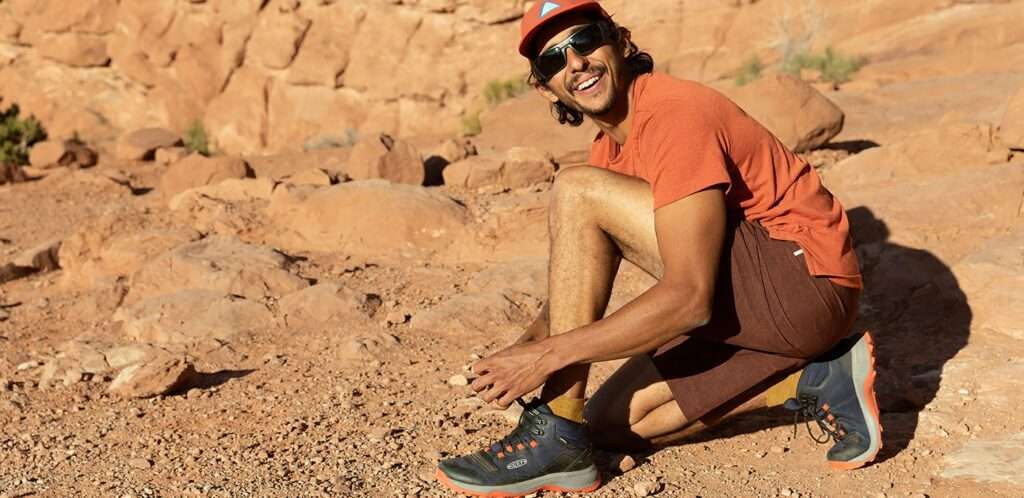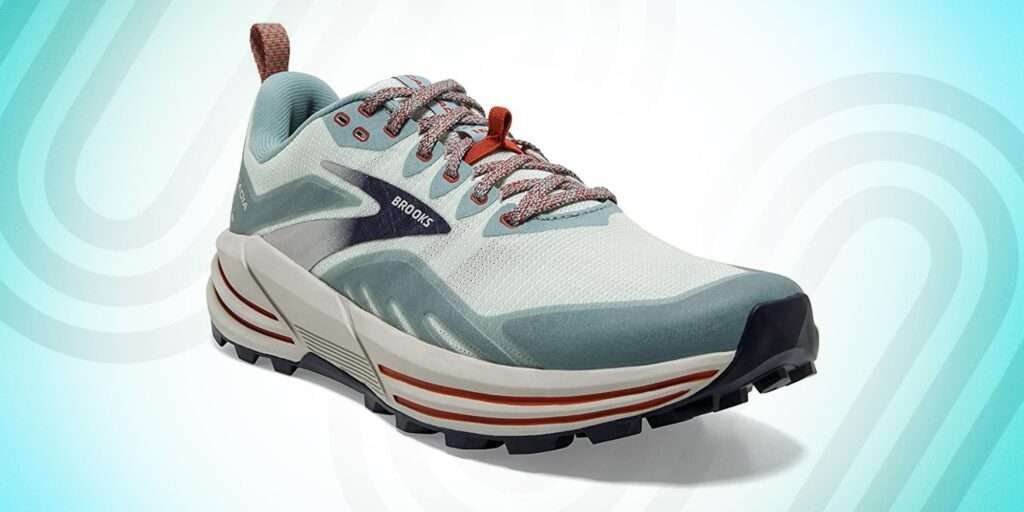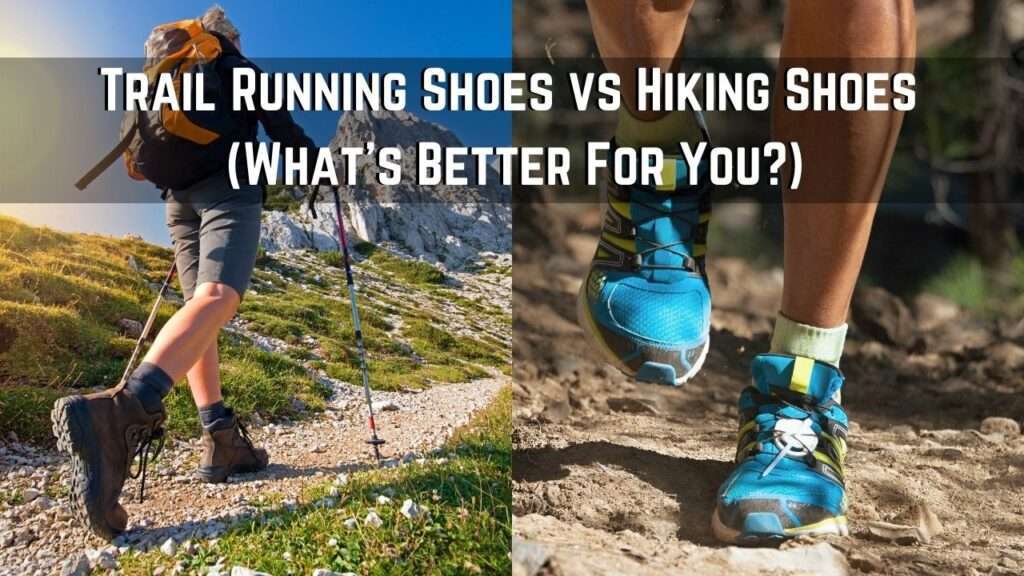So, you’re an adventure enthusiast, huh? Always on the lookout for thrilling hiking trails and scenic landscapes to explore. But here’s the thing, have you ever wondered if your trusty running shoes can also double up as your go-to hiking companions? Well, buckle up because we’re about to unravel the answer to this question. In this article, we’ll discuss whether running shoes are suitable for your daring hiking adventures or if it’s time to invest in some proper hiking boots. Get ready to lace up and hit the trails!
Comfort and Fit
Cushioning
When it comes to hiking adventures, comfort is key. You want a pair of shoes that will provide you with ample cushioning to absorb the impact of each step you take on the trail. Running shoes are known for their excellent cushioning, making them a viable option for hiking. The cushioning in running shoes helps to reduce the strain on your feet and joints, allowing you to hike for longer without experiencing discomfort or fatigue.
Support
Support is another crucial factor to consider when choosing shoes for your hiking adventures. Running shoes are designed to provide support to your feet, especially in the arch area. This support helps to stabilize your feet, reducing the risk of injuries while hiking. However, while running shoes offer good support for walking or running on flat surfaces, they may lack the necessary ankle support for more rugged and uneven terrains.
Fit
A proper fit is essential to ensure comfort and prevent any foot-related issues during your hike. Running shoes are typically designed with a snug fit that molds to the shape of your feet. This close fit helps to keep your feet secure and prevents any unnecessary movement inside the shoe. However, make sure to try on running shoes before purchasing them for hiking, as the fit may vary depending on the brand and model. It’s always a good idea to walk around in them for a bit to test their fit and comfort.
Traction and Stability
Grip
When you’re exploring the great outdoors, traction is crucial. You need shoes that can grip onto various surfaces to prevent slipping and sliding. While running shoes are not specifically designed for hiking, many models offer excellent traction. Look for running shoes with non-marking rubber outsoles that have a patterned or lugged design. These types of outsoles provide the necessary traction on both wet and dry terrains, making them suitable for hiking adventures.
Outsole Design
The design of the outsole plays a significant role in the overall stability of your shoes. Running shoes tend to have a flatter outsole compared to hiking boots, which can affect stability on uneven terrains. However, some running shoe models feature a more aggressive outsole pattern that provides enhanced stability. Additionally, the flexibility of the outsole can impact your overall grip and stability on the trail. Consider your intended hiking terrain and choose a running shoe with an outsole design that matches your needs.
Ankle Support
Ankle support is crucial when hiking, especially on challenging or rocky terrains. While running shoes tend to have a lower cut compared to traditional hiking boots, some models offer additional ankle support features. Look for running shoes with padded collars or ankle support technologies that provide extra stability and protection to your ankles. If you’re planning on hiking in more rugged terrains or have weak ankles, you might want to consider hiking boots that offer better ankle support.
Durability and Protection
Materials
The durability of your shoes is essential when it comes to hiking. Running shoes generally use lightweight materials to enhance performance, but they may lack the durability needed for long-lasting use on the trail. Hiking boots, on the other hand, are typically made with sturdier materials such as leather or synthetic textiles, which provide better protection against abrasions, rocks, and other potential hazards encountered while hiking. Consider the type of terrain you’ll be hiking on and the duration of your hikes when deciding between running shoes and hiking boots.
Toe Protection
When you’re out on the trail, there’s always a possibility of stubbing your toe or accidentally kicking rocks or roots. That’s why toe protection is crucial, especially for longer hikes. While running shoes provide some level of toe protection, hiking boots often have reinforced toe caps or rubber bumpers that offer additional shielding. If you’re planning on hiking in areas with rocky or uneven terrains, opt for hiking boots that provide superior toe protection to avoid potential injuries.
Waterproofing
Weather conditions can change unexpectedly while hiking, and being caught in the rain without proper footwear can be a miserable experience. While running shoes are generally not designed to be fully waterproof, some models may have water-resistant properties to protect your feet from light rain or splashes. However, hiking boots are usually equipped with waterproof technologies, such as Gore-Tex, that provide excellent protection against moisture. If you’re planning on hiking in wet or muddy conditions, investing in waterproof hiking boots can keep your feet dry and comfortable throughout your adventure.
Terrain and Distance
Trail Type
Consider the type of trails you’ll be hiking on when choosing between running shoes and hiking boots. If you’ll be hiking on well-maintained and relatively flat trails, running shoes can be a good option. They provide agility and flexibility, allowing you to move more freely. However, if your hiking adventures take you to more rugged or technical terrains with steep inclines, loose rocks, or uneven surfaces, hiking boots are a safer choice. The added stability and ankle support of hiking boots can help prevent injuries on challenging trails.
Terrain Difficulty
The difficulty of the terrain you’ll be hiking on should also play a part in your footwear decision. If you’re tackling easy or moderate trails with minimal obstacles, running shoes can provide you with the necessary comfort and flexibility. However, if you’re venturing into more difficult terrains like steep mountains, rocky surfaces, or thick forests, hiking boots are the ideal choice. The sturdiness, ankle support, and durability of hiking boots make them better equipped to handle these challenging terrains.
Long-Distance Hiking
For long-distance hiking or multi-day backpacking trips, the comfort and support provided by hiking boots are often more beneficial. Running shoes, while comfortable for shorter hikes, may not offer the same level of cushioning, stability, and protection needed for prolonged periods of hiking. Hiking boots are designed to provide optimal support, reduce fatigue, and protect your feet against the repetitive impact of long hikes. If you’re planning on embarking on a lengthy outdoor adventure, investing in a pair of sturdy hiking boots is highly recommended.

Weight and Breathability
Lightweight Design
When you’re hiking, the weight of your footwear can make a significant difference in your overall comfort and endurance. Running shoes are generally lighter than hiking boots, allowing you to move faster and with less effort. Their lightweight design makes them ideal for shorter hikes or fast-paced trail running. However, if you’re carrying a heavy backpack or planning longer hikes, the added stability and durability of hiking boots can outweigh the slight increase in weight.
Breathable Fabrics
Hiking in hot and humid conditions can cause your feet to sweat excessively, leading to discomfort and potential foot problems. Running shoes often feature breathable mesh uppers that allow air to circulate around your feet, keeping them cooler and drier. This breathability can be beneficial, especially on shorter hikes or in warm climates. However, hiking boots with waterproof membranes may have reduced breathability. If you’re hiking in cooler or wetter conditions, the waterproofing benefits of hiking boots may outweigh the need for breathability.
Moisture Management
Proper moisture management is essential to keep your feet dry and comfortable throughout your hike. Running shoes are typically designed to wick away moisture, preventing excessive sweating and reducing the risk of blisters. The breathable fabrics and moisture-wicking properties of running shoes make them a suitable option for shorter hikes or in moderate weather conditions. However, if you’re hiking in wet or muddy terrains or expect to encounter heavy rainfall, the superior waterproofing of hiking boots can provide better moisture protection for your feet.
Foot and Toe Movement
Flexibility
The flexibility of your footwear can affect your overall comfort and performance while hiking. Running shoes are designed to provide maximum flexibility, allowing your feet to move naturally. This flexibility can be advantageous on easy or moderate trails, as it enables you to adapt to various terrains more easily. However, on rugged terrains or steep inclines, the added stability and rigidity of hiking boots can prevent your feet from rolling or twisting. Consider the flexibility of your footwear based on the type of hiking you’ll be doing and the terrains you’ll encounter.
Toe Box Size
Having enough room for your toes to move comfortably is essential for an enjoyable hiking experience. Running shoes tend to have a wider toe box compared to hiking boots, allowing for better toe splay. This additional space is beneficial for those with wider feet or those who prefer a roomier fit. However, if you have narrower feet or need more protection against impacts and trail hazards, hiking boots with a snugger toe box may be a better choice. Consider your foot shape and preferences to determine the ideal toe box size for your hiking footwear.
Protection Against Scratches
While hiking, you’re bound to encounter various trail hazards, including rocks, roots, and vegetation. Protecting your feet against scratches and potential injuries is crucial, especially on challenging terrains. Running shoes generally provide minimal protection against sharp objects, as they prioritize flexibility and lightweight design. In contrast, hiking boots are designed with higher ankle collars, reinforced toe caps, and more durable materials, providing better defense against scratches and impacts. If you’re hiking in areas with rocky or brush-filled trails, hiking boots offer superior protection for your feet.

Ankle and Arch Support
Ankle Support
The stability and support provided to your ankles can make a significant difference in preventing injuries while hiking. Running shoes typically have a lower profile and offer less ankle support compared to hiking boots. If you have weak ankles or plan on hiking in challenging terrains, opt for hiking boots that provide additional ankle support. Hiking boots with higher ankle collars and padding can help prevent ankle rolls and provide the necessary stability for uneven surfaces and steep descents.
Stability Control
Having proper stability control in your footwear is crucial for maintaining balance and preventing accidents while hiking. Running shoes, with their lightweight and flexible design, focus more on agility and maneuverability rather than stability. Hiking boots, on the other hand, are engineered to provide better stability control. They often feature rigid midsoles and supportive shanks that help distribute your weight evenly and reduce fatigue while navigating uneven terrains. If you’re prone to balance issues or plan on hiking on challenging trails, the enhanced stability of hiking boots can greatly benefit you.
Arch Support
Having the right arch support is essential for preventing foot discomfort and maintaining proper alignment. Running shoes typically offer varying levels of arch support, depending on the brand and model. If you have high arches or suffer from conditions like plantar fasciitis, customized arch support or orthotic inserts may be necessary, regardless of whether you choose running shoes or hiking boots. However, if you have flat feet or require more substantial arch support, hiking boots often come with built-in arch support that can alleviate discomfort and help maintain proper foot alignment.
Specific Hiking Features
Tongue Gusset
A tongue gusset is a feature that prevents debris such as dirt, rocks, or twigs from entering your shoes through the lace area. While running shoes may have a standard tongue design, hiking boots often feature a gusseted tongue that is attached to the upper, effectively sealing off the area. This additional protection against external elements can be beneficial on hikes where you’re likely to encounter loose or rough terrain.
Heel Brake
The ability to brake or control your speed while descending steep slopes is crucial for your safety while hiking. Running shoes generally have a flatter outsole design, which may not offer the same level of control as hiking boots on downhill sections. Hiking boots often feature a defined heel brake, which provides a better grip and traction when descending steep surfaces. This heel brake can help prevent slippage and give you the confidence to tackle challenging descents safely.
Rock Plate
When hiking on rocky terrains, the impact of sharp rocks against the bottom of your feet can cause discomfort and potentially lead to injuries. Some hiking boots are equipped with a rock plate, a protective layer inserted between the midsole and the outsole that shields your feet from sharp objects. This rock plate helps distribute the pressure from rocks or uneven surfaces, reducing the risk of bruising or puncture wounds. While running shoes may offer minimal protection against rocks, hiking boots with a built-in rock plate provide superior defense for rugged trails.

Personal Preferences
Individual Comfort
At the end of the day, personal comfort is subjective and varies from person to person. Some individuals may find running shoes to be more comfortable for hiking due to their lightweight design and flexibility. Others may prefer the stability and support provided by hiking boots, even if it means sacrificing some comfort. Ultimately, the choice between running shoes and hiking boots should be based on what feels best for you during your hikes. Take the time to try on and test both options to see which footwear offers the most comfort and suits your unique needs.
Previous Experience
Consider your past hiking experiences when deciding on footwear. If you have a history of ankle injuries or discomfort during hikes, investing in hiking boots with better ankle support may be the wisest choice. On the other hand, if you’ve had successful and enjoyable hikes in running shoes, and feel confident in their support and performance, there may not be a need to switch to hiking boots. Drawing from your previous experiences will help you make an informed decision regarding the comfort and suitability of running shoes for your hiking adventures.
Purpose of Hike
The purpose of your hike can also influence your choice of footwear. If you’re going on a casual day hike with well-maintained trails, running shoes may provide the comfort and agility you need for an enjoyable experience. On the other hand, if you’re embarking on a multi-day backpacking trip or planning to navigate challenging terrains, the added protection and support of hiking boots are worth considering. Assess the specific requirements of your hike and choose your footwear accordingly to ensure a safe and satisfying adventure.
Budget Considerations
Running Shoes vs. Hiking Boots
Cost is an important consideration for many outdoor enthusiasts. While running shoes tend to be more budget-friendly compared to hiking boots, they may not offer the same level of durability for long-term use. Hiking boots are typically constructed with sturdier materials and superior craftsmanship to withstand the demands of rugged trails, but this often comes at a higher price point. If you’re on a tight budget or primarily hike on easy-to-moderate trails, running shoes can be a cost-effective option. However, if you plan on embarking on more challenging hikes or value long-term durability, investing in quality hiking boots becomes a worthwhile expense.
Cost Comparison
When comparing the cost of running shoes and hiking boots, it’s essential to consider the longevity of your chosen footwear. Running shoes, due to their lightweight constructions and materials, may wear out more quickly, particularly if used on rugged terrains. This means you may need to replace them more frequently, resulting in higher long-term costs. Hiking boots, while initially more expensive, tend to be more durable and can withstand rough conditions without deteriorating as rapidly. Assess the cost versus the expected lifespan of your footwear to determine which option offers better value for your investment.
Long-Term Investment
When deciding between running shoes and hiking boots, think long-term. If you’re an occasional hiker or primarily hike on easy trails, running shoes may be a suitable and cost-effective choice. However, if you’re an avid hiker or plan on tackling more challenging terrains, investing in a high-quality pair of hiking boots can be a long-term investment. Hiking boots are designed to withstand the rigors of the trail and provide the necessary support and protection for your feet. By choosing durable hiking boots, you’re ensuring that you’ll have reliable footwear that will last for many adventures to come.
In conclusion, while running shoes may not be specifically designed for hiking, they can still be suitable for certain hiking adventures. Their comfort, cushioning, and traction capabilities make them a viable option for less rugged terrains and shorter hikes. However, if you plan on tackling more challenging trails or embarking on long-distance hikes, investing in hiking boots is advisable. Hiking boots offer superior ankle support, protection, and durability, making them better equipped to handle rugged terrains and extended outdoor excursions. Remember to consider your personal preferences, the nature of your hikes, and your budget when making your footwear decision, as it ultimately comes down to what suits you best.

